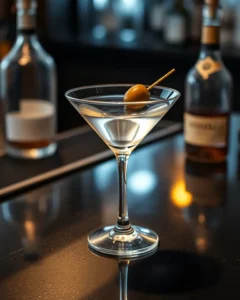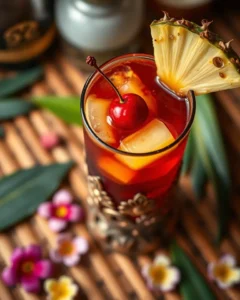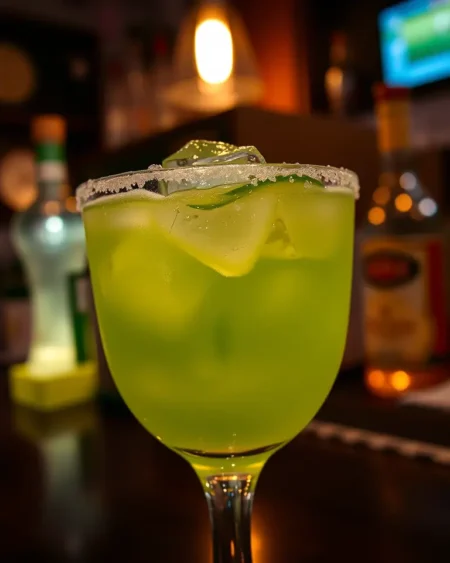The Dante cocktail, a more recent addition to the cocktail scene, distinguishes itself with a unique blend of flavors. Unlike some cocktails with a long history, the Dante has quickly gained popularity for its refreshing taste and complexity. This article explores the recipe, its variations, and the elements that make it a standout drink.
Understanding the Core Recipe
The classic Dante cocktail recipe features a sophisticated balance of sweet, sour, and herbal notes. The key ingredients include:
- Tequila Blanco: This forms the base of the cocktail, providing a clean, agave-forward flavor.
- Green Chartreuse: This herbal liqueur adds a complex, sweet, and slightly spicy element to the drink.
- Kümmel: A caraway-flavored liqueur, Kümmel introduces a distinct, savory note.
- Lime Juice: Fresh lime juice contributes a necessary tartness, balancing the sweetness and richness of the other ingredients.
- Simple Syrup: A touch of simple syrup helps to round out the drink.
- Celery Bitters: Just a dash of celery bitters adds a savory depth.
Typically, these ingredients are combined in a shaker with ice, shaken well, and then double strained into a coupe glass. A basil leaf serves as a beautiful and aromatic garnish.
Variations on the Dante
While the classic recipe is a great place to start, there are several variations of the Dante that are worth exploring. These alterations often play with the proportions of the base recipe or introduce completely new elements.
Mezcal Dante
One notable variation is the Mezcal Dante. This version incorporates mezcal, a smoky agave spirit, along with tequila. The combination of mezcal’s smokiness and tequila’s agave notes creates a more layered and intense flavor profile. The recipe remains otherwise consistent with the addition of basil leaves.
Other Variations
Some home bartenders have experimented with different spirits and flavor combinations, leading to other variations:
- Rum-Based Dante: Some recipes call for aged agricole rum, Probitas rum, and Doctor Bird rum, along with Kummel, grapefruit juice, pineapple juice, lemon juice and cream of coconut, creating a tropical twist.
- Tequila and Chartreuse Focus: Some recipes emphasize the tequila and chartreuse, adjusting the quantities of Kummel, lime juice, and simple syrup to fine-tune the flavor balance.
The Dante vs. The Negroni
It’s important to distinguish the Dante cocktail from the more classic Negroni. Although both are complex drinks, they differ significantly in composition and flavor profile. The classic Negroni consists of equal parts gin, Campari, and sweet vermouth.
- Flavor profile: The Negroni is known for its bitter, herbal, and slightly sweet taste. In contrast, the Dante is brighter, with a mix of herbal, citrus, and subtle savory notes.
- Ingredients: While the Negroni uses gin as its base spirit, the Dante features tequila (or a mix of tequila and mezcal). The Dante also incorporates Chartreuse and Kümmel, which are absent from the Negroni.
- Overall Experience: The Negroni is often considered a more robust, evening cocktail, while the Dante, with its refreshing qualities, can be enjoyed at any time.
Negroni Variations
The Negroni, itself, has numerous variations, including:
- White Negroni: This variation uses Lillet Blanc and Suze instead of Campari and sweet vermouth, resulting in a lighter, more citrusy flavor.
- Negroni Sbagliato: Prosecco is used instead of gin for a sparkling and lighter variation.
- Boulevardier: This swaps gin for whiskey, offering a warmer, more full-bodied version.
- Old Pal: Uses dry vermouth instead of sweet vermouth with whiskey and Campari to create a lighter, sharper cocktail.
- Smoked Whisky Negroni: Adds an extra layer of intensity to the drink with a smoky twist.
- Aperol Spritzoni: A lighter version using Aperol and Prosecco.
- Chocolate Negroni: A classic Negroni with a dash of chocolate bitters.
These variations highlight the adaptability of the Negroni base, similar to how the Dante recipe can be modified.
Where to Enjoy the Dante
The Dante cocktail is often found at bars that specialize in innovative and craft cocktails. While it may not be as ubiquitous as classics like the Martini or the Old Fashioned, its growing popularity means that it is becoming more commonly available. Many establishments that pride themselves on their unique offerings feature the Dante on their menus.
Dante NYC
Notably, Dante, a well-known bar in New York City, has greatly contributed to the drink’s popularity. Dante has won awards for being among the World’s Best Bars and is known for both its classic cocktails and unique creations. While they have a wide array of offerings, their namesake cocktail has become a must-try for many cocktail enthusiasts.
Dante NYC offers a variety of other cocktails, such as:
- Dante’s Garibaldi: Made with Campari and fluffy orange juice.
- Campari Shakerato: Features Campari and orange bitters.
- All Day Bloody Mary: A classic with a cold-pressed vegetable mix.
- Salty Dog: A refreshing mix of vodka and fluffy pink grapefruit juice.
Dante’s commitment to high-quality ingredients and innovative mixes is consistent with the profile of the Dante cocktail itself.
Conclusion
The Dante cocktail represents a modern approach to cocktail creation. Its careful balance of sweet, sour, herbal, and savory notes provides a unique drinking experience. While it shares some characteristics with other cocktails, like the Negroni, it is distinctive in its ingredient combinations. Whether you’re enjoying it at a high-end bar or mixing it up at home, the Dante is a cocktail that deserves a place on any drinks enthusiast’s list. Its versatility, demonstrated by its various adaptations, ensures that the Dante will continue to evolve and delight cocktail lovers for years to come.







